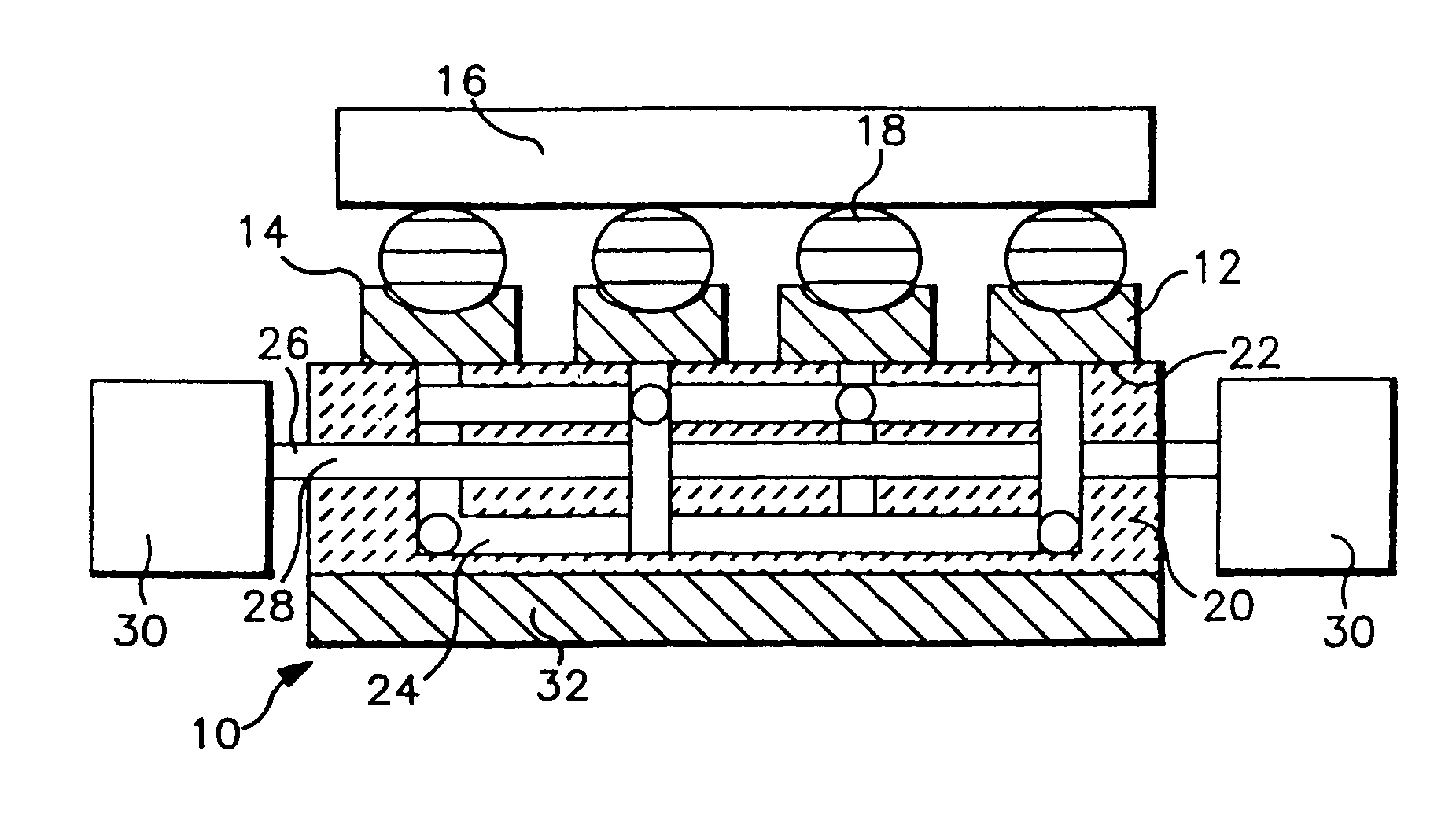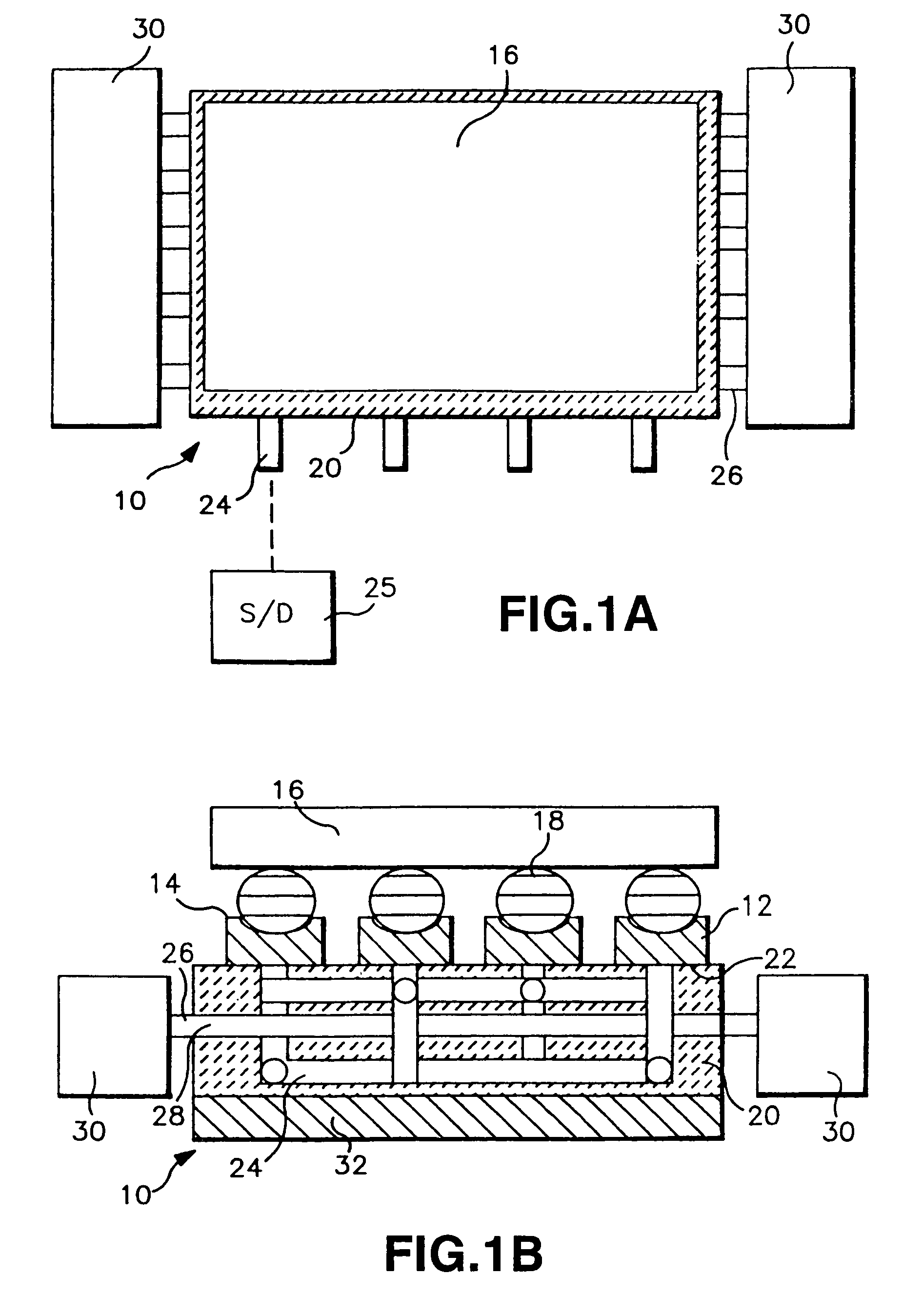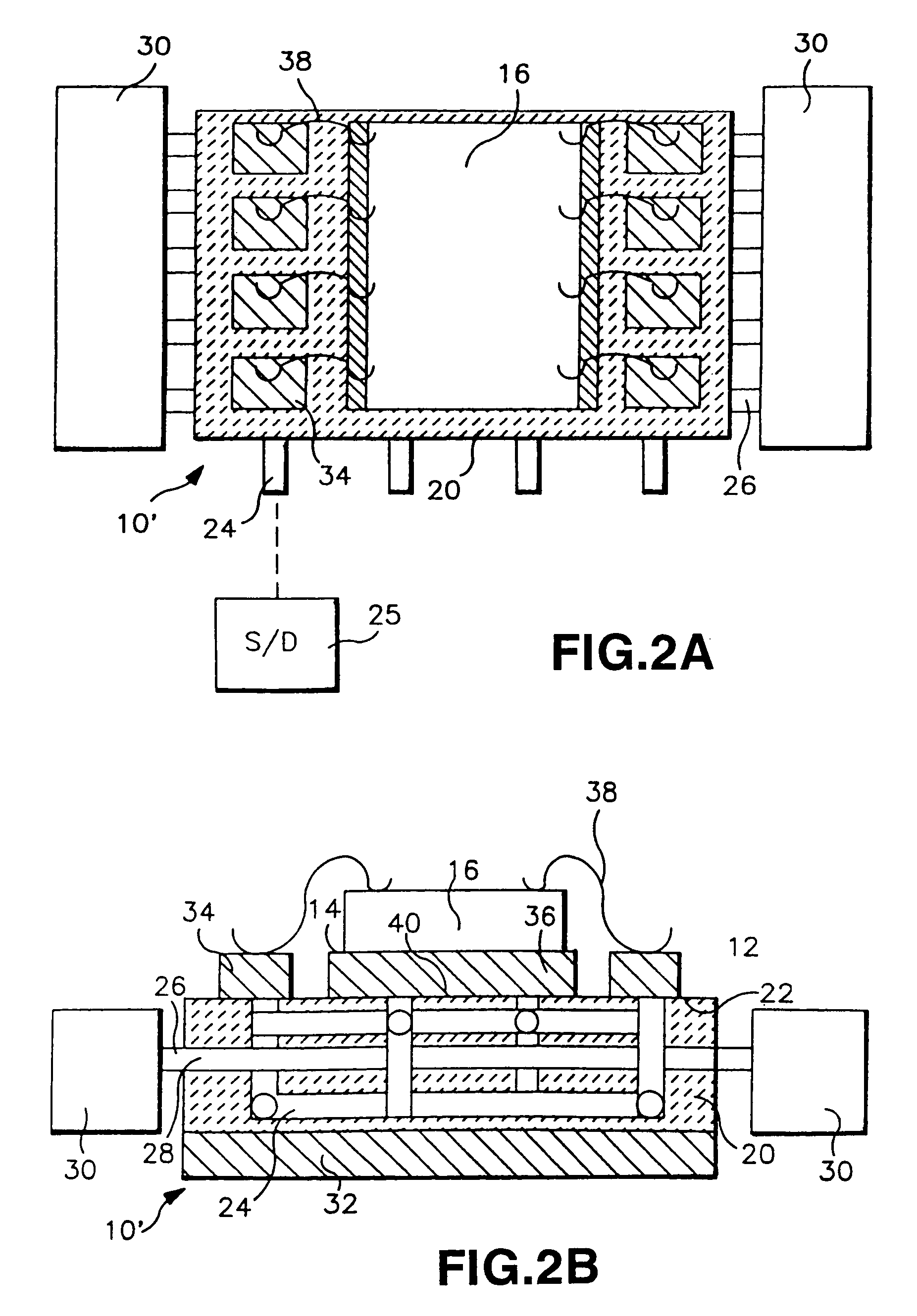Method of manufacture of ceramic composite wiring structures for semiconductor devices
a technology of ceramic composite wiring and semiconductor devices, applied in the field of ceramic composite circuit wiring boards and/or multi-chip modules, can solve the problems of reducing circuit performance, reducing the volume fraction of solid state ceramic, and limiting the physical dimensions of si
- Summary
- Abstract
- Description
- Claims
- Application Information
AI Technical Summary
Benefits of technology
Problems solved by technology
Method used
Image
Examples
Embodiment Construction
[0039]Reference is now made to FIGS. 1A, 1B, 2A and 2B which illustrate the preferred embodiments of the composite structure 10 and 10′ of this invention, also referred to as a composite wiring structure, while FIGS. 3A–3F illustrate the sequential steps used to create the composite structure with an electrical network, interconnects and heat sinks internal to the composite's dielectric member. For ease of understanding of this invention, like reference numerals will be used throughout the following description to identify identical elements illustrated in all embodiments.
[0040]The composite circuit wiring structure 10, although not limited thereto, is primarily used as a circuit wiring board, or, alternatively, as a multichip module. In the preferred embodiment of the invention shown in FIGS. 1A and 1B, the composite structure 10 has a top conductive, preferably metal member 12 with an exterior major surface 14 upon which at least one SIC 16 eventually will be mounted. Any suitable...
PUM
| Property | Measurement | Unit |
|---|---|---|
| Temperature | aaaaa | aaaaa |
| Dielectric polarization enthalpy | aaaaa | aaaaa |
| Area | aaaaa | aaaaa |
Abstract
Description
Claims
Application Information
 Login to View More
Login to View More - R&D
- Intellectual Property
- Life Sciences
- Materials
- Tech Scout
- Unparalleled Data Quality
- Higher Quality Content
- 60% Fewer Hallucinations
Browse by: Latest US Patents, China's latest patents, Technical Efficacy Thesaurus, Application Domain, Technology Topic, Popular Technical Reports.
© 2025 PatSnap. All rights reserved.Legal|Privacy policy|Modern Slavery Act Transparency Statement|Sitemap|About US| Contact US: help@patsnap.com



